The Québec maritime Blog
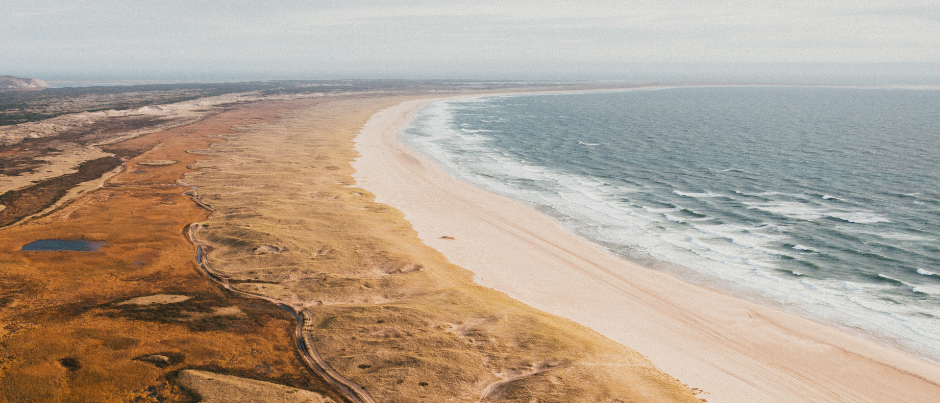
-
Pointe de l'Est, Îles de la Madeleine
Kam Vachon / Tourisme Îles de la Madeleine
12 Natural Sites for Outdoor Lovers to Discover in Our Regions
Home to many natural sites worth exploring, Eastern Québec provides an incredible playground for all your outdoor adventures. Let yourself be charmed by the diversity of landscapes in our regions, from rugged coastlines and vast forests to majestic mountains. Here is a glimpse of the natural treasures that await you on your next getaway to our fascinating destinations!
Parc de la Pointe
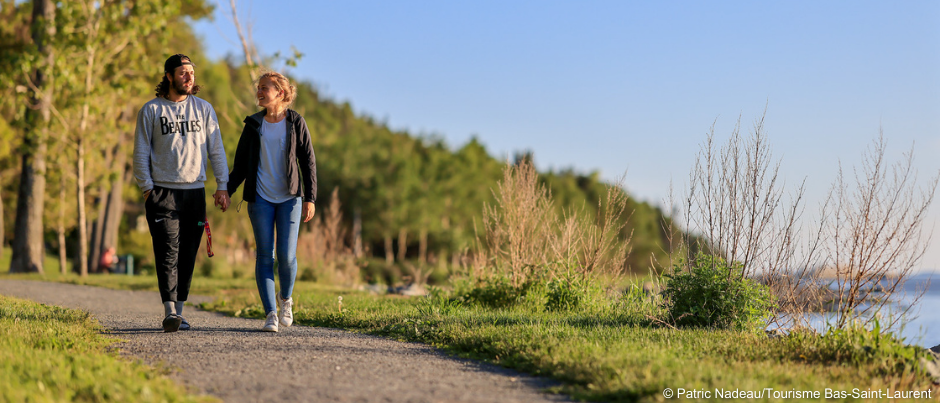
What it is: This park along the St. Lawrence gives you the opportunity to immerse yourself in natural beauty while discovering local history.
Where it is: The park is in Rivière-du-Loup in Bas-Saint-Laurent and is accessible via Rue Mackay.
When it’s open: The park is open year-round.
What to do there: To discover the fascinating stories and legends that have shaped the region over the years and contemplate the area’s heritage homes, go on a walking tour that includes interpretive panels as well as sound clips and videos you can download with your smartphone or tablet (in French only).
As a bonus: A seaside walking trail and a 5-km (3-mi.) loop bike path offer you the opportunity to admire the area’s natural beauty as well as magnificent sunsets.
Île aux Lièvres and Île du Pot à l’Eau-de-Vie
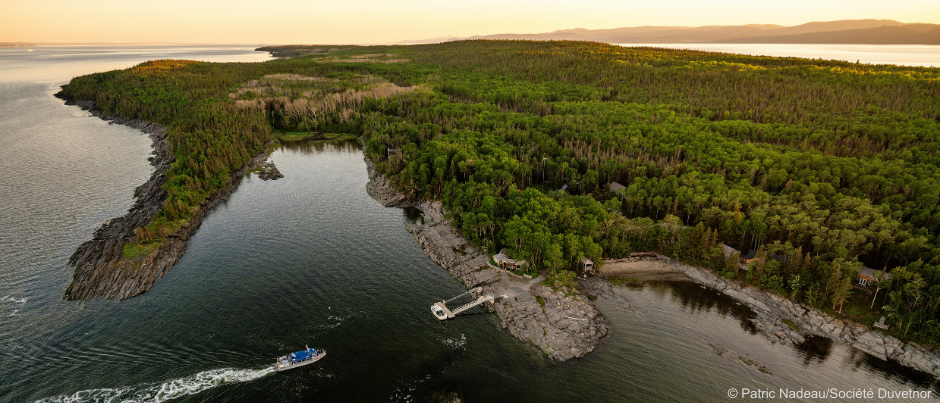
What it is: These two islands are part of a cluster of wild islands protected by Société Duvetnor. Home to large colonies of seabirds, the islands are sanctuaries for marine wildlife, which thrives in this unspoiled natural environment.
Where it is: The islands are in the Saguenay–St. Lawrence Marine Park, off Rivière-du-Loup in Bas-Saint-Laurent.
When it’s open: Both islands are accessible to the public from June to September.
What to do there: Île aux Lièvres offers over 45 km (30 mi.) of hiking trails with breathtaking views of the coastal landscape, making this island a true paradise for hikers. Take advantage of your time here to explore the trails while enjoying unforgettable encounters with local wildlife. From seabirds and seals to majestic beluga whales, you’ll have many opportunities to observe diverse wildlife species in their natural habitats.
Lodging options: Prolong your stay and enjoy an immersive experience in the middle of the St. Lawrence by spending the night in the fully restored historic Pot à l’Eau-de-Vie Lighthouse on the island of the same name. You can also pitch your tent on Île aux Lièvres or spend the night in an inn or cottage on that island, lulled to sleep by the sounds of nature.
As a bonus: Enjoy a guided sea excursion around the islands, with or without stops, to admire the area’s natural beauty.
Saint-Barnabé Island
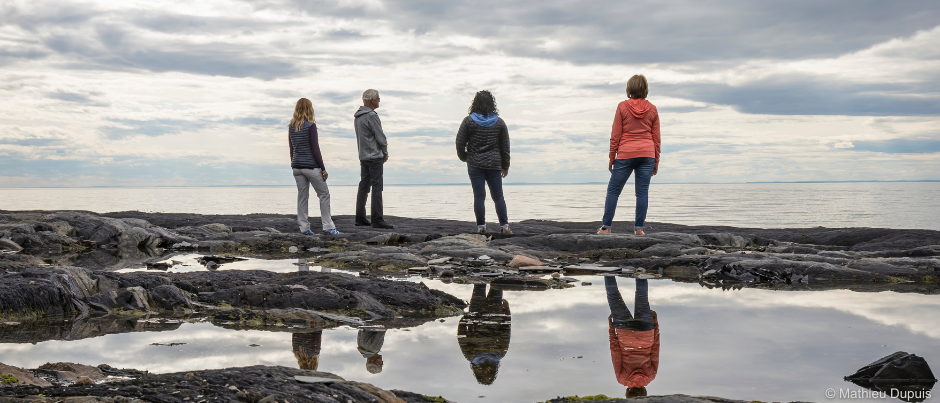
What it is: Once inhabited by a hermit named Toussaint-Cartier, this island is 6 km (4 mi.) long and only 300 metres (980 feet) wide.
Where it is: The island is off the coast of Rimouski in Bas-Saint-Laurent.
When it’s open: The island is accessible from mid-June to early September.
What to do there: To fully appreciate the beauty of this area, explore the 20-km (12-mi.) network of hiking trails on the island! Along the way, you’re likely to spot harbour seals as well as some of the 72 species of birds found here.
Lodging options: Prolong your experience by spending the night in a rustic campsite on this tranquil and wild island.
As a bonus: To immerse yourself fully in the spirit of the place and learn more about the island’s wildlife, plants and fascinating history, consult the interpretive panels located at various points on the trails (in French only).
Canyon des Portes de l’Enfer
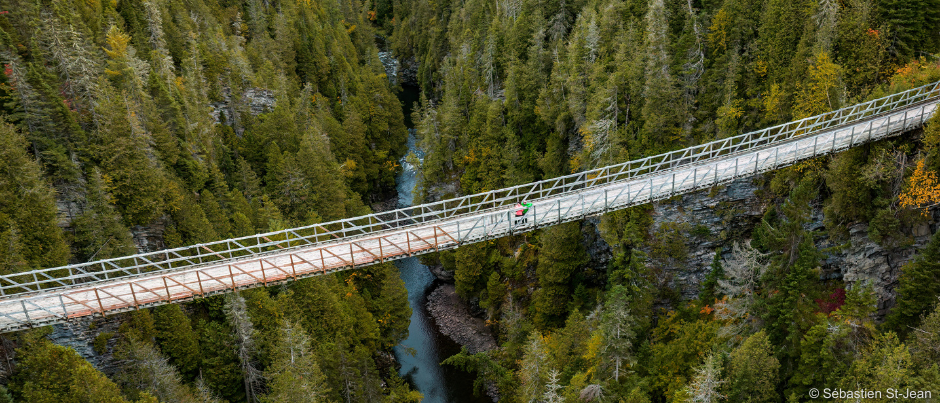
What it is: This outdoor attraction includes a canyon that stretches for nearly 5 km (3 mi.) between rock walls that are up to 90 metres (295 feet) high!
Where it is: The site is in Saint-Narcisse-de-Rimouski, about 35 km (20 km) south of Rimouski, in Bas-Saint-Laurent.
When it’s open: The site is open from May to late October.
What to do there: This is your opportunity to cross the highest suspension footbridge in the province of Québec, which is 63 metres (205 feet) high and 99 metres (325 feet) long, as well as admire a breathtaking view of the surrounding forest and the Rimouski River.
Lodging options: You can sleep in the middle of the forest surrounded by nature in a comfortable cabin, yurt, glamping unit or tent in a rustic campsite.
As a bonus: Discover breathtaking panoramic views via a network of 20 km (12 mi.) of hiking trails that will take you to waterfalls and the Descent to Hell, a steep 300-step staircase.
Reford Gardens
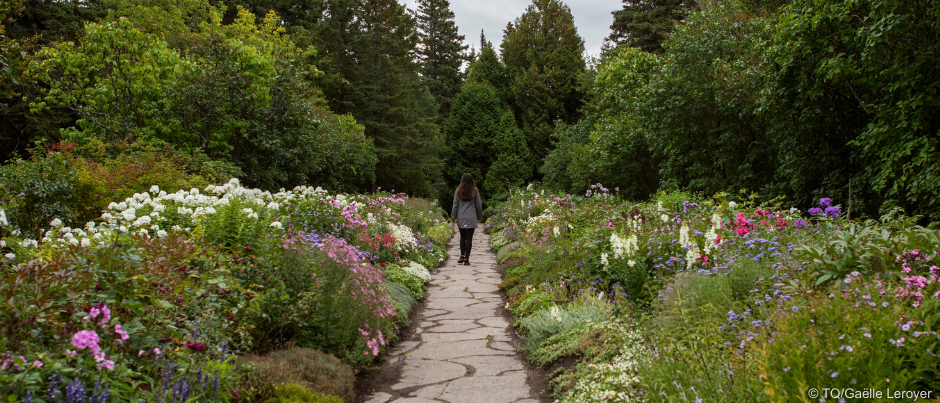
What it is: A national historic site of Canada and a Québec heritage site, this horticultural attraction features some 3000 species and varieties of plants in about a dozen different gardens.
Where it is: The gardens are in Grand-Métis in Gaspésie.
When it’s open: This attraction is open from June to early October.
What to do there: Don’t miss this opportunity to see Himalayan blue poppies, the Reford Gardens’ most famous flowers as well as garden creator Elsie Reford’s favourite. Plan to visit when you can admire an entire bed of these flowers in bloom, between late June and mid-July. Be sure to also go for a stroll around the kitchen garden beds to discover the edible plants, herbs and flowers that are used in the dishes served in the gardens’ restaurants and café, including the Estevan Lodge restaurant, which offers a unique dining experience.
As a bonus: This year marks the 25th anniversary of the International Garden Festival, which takes place at the Reford Gardens every year. From June 22 to October 6, 2024, discover this festival under the theme of “The Ecology of Possibility.”
International Appalachian Trail – Québec
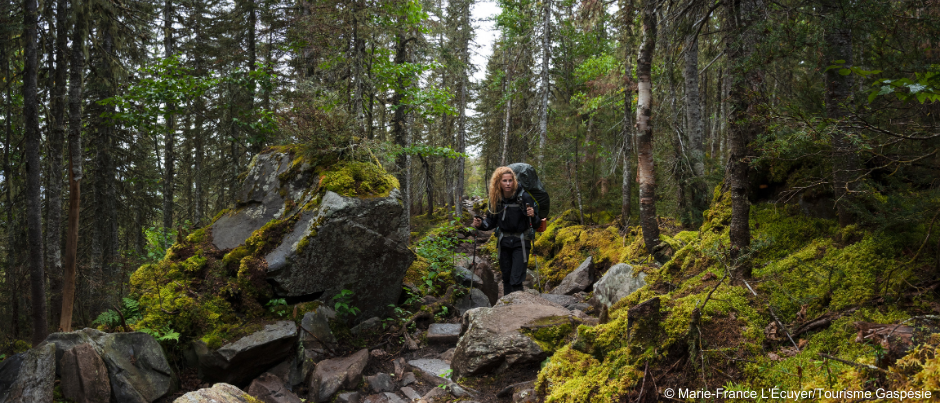
What it is: Winding through the mountains in Gaspésie, this segment of the International Appalachian trail is 650 km (400 mi.) long and is the first long-distance hiking route to receive the Grande Randonnée designation in North America (giving it the official title of GR®A1).
Where it is: The trail starts in Matapédia and end in Cap-Gaspé in Forillon National Park, at the tip of the Gaspé Peninsula.
When it’s open: The trail is accessible from mid-May to mid-October.
What to do there: Depending on how much time you have and your fitness level, you can opt for an excursion lasting from 1 to 40 days and ranging from easy to expert. Huts, shelters and tent platforms are found all along the trail. Inquire about the packages available.
As a bonus: The trail also offers exceptional opportunities to observe local wildlife. If you’re lucky you may spot moose along with a variety of birds and other wild animals in their natural habitats.
Parc du Bourg de Pabos

What it is: This park is a historic and archaeological site that also offers a multitude of outdoor activities.
Where it is: The site is in Pabos Mills, near Chandler, in Gaspésie.
When it’s open: The site is open from mid-June to late September.
What to do there: Discover the wisdom of the ancients during Fantöm: The Hunt, a brand-new immersive experience available as of spring 2024. And don’t miss Ura, an interactive trail that will immerse you in an adventure where the power of water takes on new meaning. Hikers will be happy to know that the site also offers nearly 20 km (12 mi.) of hiking trails.
Lodging options: You can spend the night in a campground by the sea in a tent, RV or glamping unit.
As a bonus: Visit the interpretation site to learn about the role of Pabos under the French regime from 1730 to 1758. Artefacts and reconstructions provide insight into life in a seigneury in Gaspésie during that time.
Percé UNESCO Global Geopark
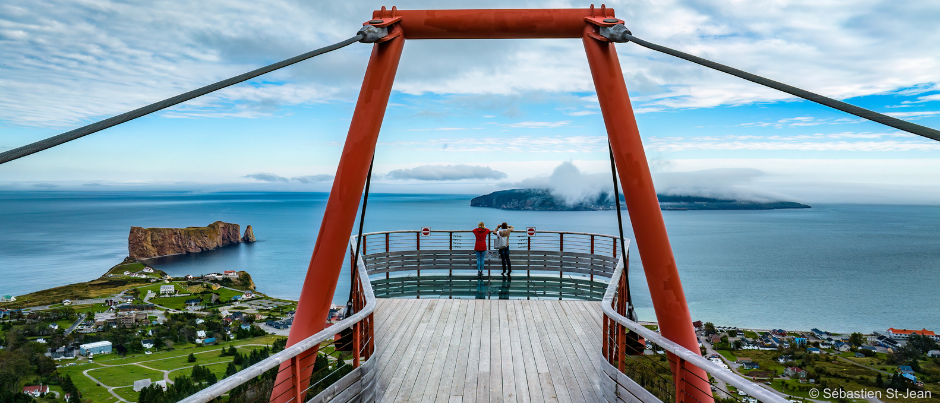
What it is: This UNESCO global geopark will give you the opportunity to explore 500 million years of Earth’s history.
Where it is: This attraction is in Percé in Gaspésie.
When it’s open: The site is open year-round.
What to do there: Venture out onto the geopark’s glass platform, which is suspended at an altitude of 200 metres (660 feet) and offers a breathtaking view of Percé and the surrounding area.
Lodging options: You can camp in the geopark.
As a bonus: Explore the geopark’s many geosites via an 18-km (11-mi.) network of trails dotted with benches and lookouts.
Station de montagne sur mer de Mont-Saint-Pierre
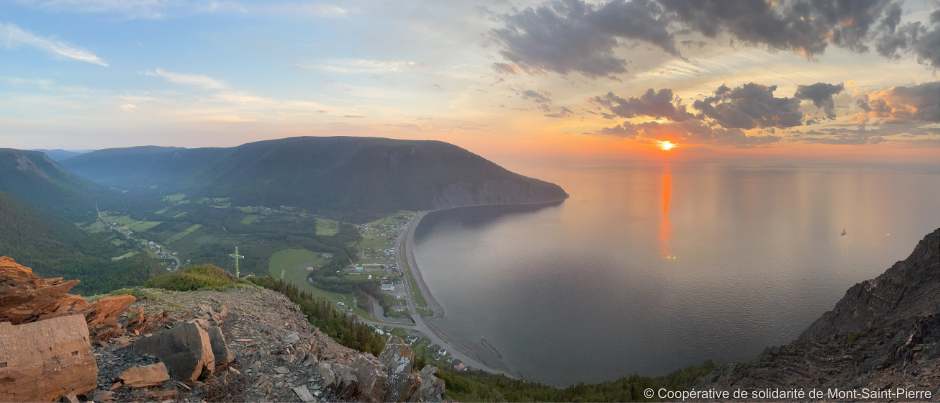
What it is: This ecotourism destination offers a wide range of activities in the mountains.
Where it is: This site is in Mont-Saint-Pierre in Gaspésie.
When it’s open: The site is open year-round.
What to do there: Explore the Delta trail, which leads to the top of Mt. Saint-Pierre or, if you’re looking for a bit more of a challenge, hike up the Lynx trail to admire an amazing view from Mt. François-Bernèche.
As a bonus: Enter the observatory at the top of Mt. Saint-Pierre for an immersive experience of geological phenomena and then head to the lookout jutting out over a cliff to admire a view of the glacial valley in Mont-Saint-Pierre and the St. Lawrence.
Parc Nature de Pointe-aux-Outardes
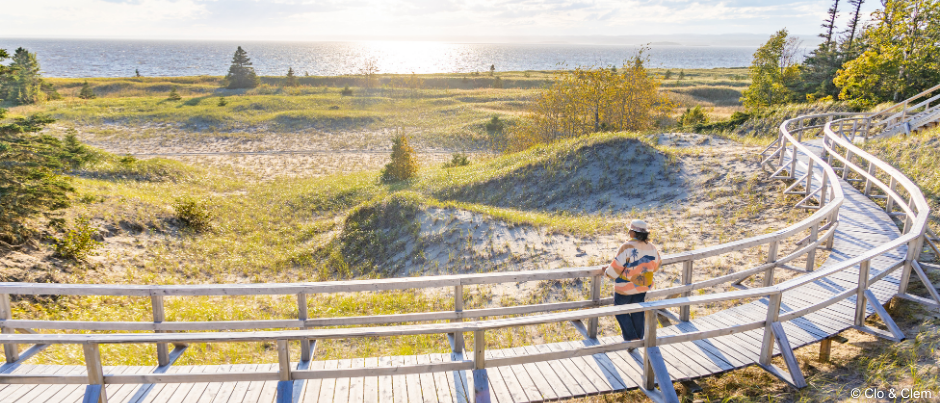
What it is: This nature park is a protected natural site that includes 9 distinct ecosystems.
Where it is: The nature park is in Pointe-aux-Outardes, about 30 km (20 mi.) west of Baie-Comeau, in Côte-Nord.
When it’s open: The nature park is open from early June to early October.
What to do there: Participate in the Great Contemplative Tour, a 2.5-km (1.5-mi.) guided hike during which you’ll learn about the flora and fauna found in the park.
Lodging options: Don’t miss this opportunity to stay in one of the nature park’s giant birdhouses! These glamping units are playfully inspired by the habitats of various local birds.
As a bonus: Ranked one of the top 5 best bird-watching sites in Québec, this nature park is home to 255 species of birds during migratory periods. Don’t forget your binoculars!
Sept Îles Archipelago
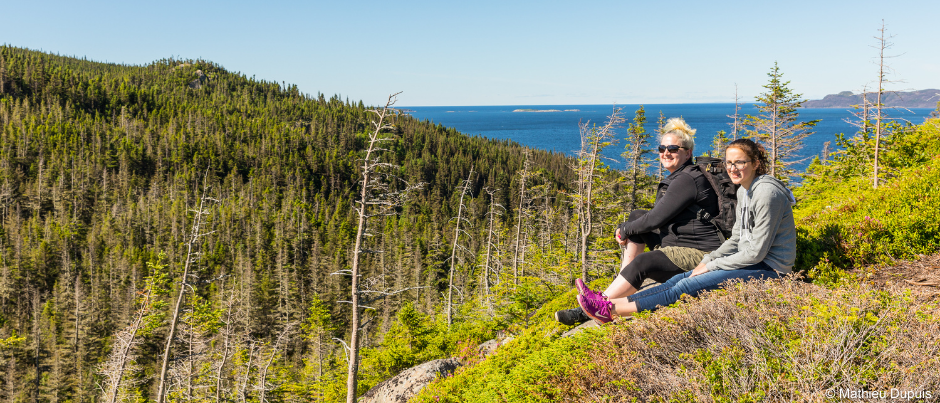
What it is: This archipelago is made up of 7 islands protected by a bay; each island has its own distinct features.
Where it is: The archipelago is off the coast of Sept-Îles, in Côte-Nord.
When it’s open: The archipelago is accessible from June to mid-September; dates may vary depending on the excursion company.
What to do there: Go on an excursion to Grande Basque, the only island in the archipelago that offers hiking trails and campsites. Interpretive activities focused on the marine world will help you discover the hidden treasures of this island.
Lodging options: Several rustic campsites are found on Grande Basque Island. Camping gear is also available for rent.
As a bonus: The archipelago is a great place to observe plants and wildlife, including whales, razorbills and other birds. Although Corossol Island is not accessible to the public, you can admire this bird sanctuary during a sea excursion.
Beaches in the Îles de la Madeleine
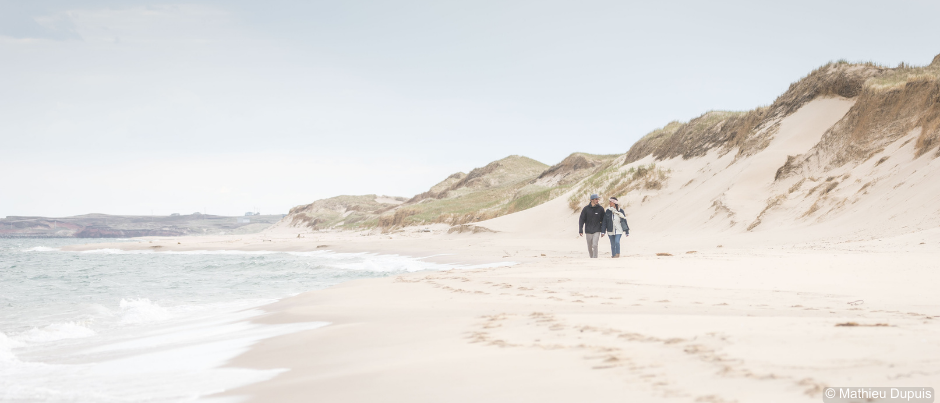
What it is: The Îles de la Madeleine are home to over 300 km (190 mi.) of golden fine-sand beaches.
Where it is: This archipelago is located in the middle of the Gulf of St. Lawrence.
When it’s open: The beaches are accessible year-round and offer a variety of experiences depending on the season.
What to do there: Treat yourself to a long and invigorating stroll along one of the archipelago’s many endless beaches. Relax and enjoy collecting seashells and sand dollars. Along the way, you may also spot seals, particularly on Grande Échouerie Beach (also known as Old Harry), which is 8.5 km (5 mi.) long! Be sure to take a moment to contemplate a magnificent sunset before heading back to your lodging establishment.
Lodging options: Many of the accommodations available on the Islands offer direct access to a beach or are located near one, allowing you to take full advantage of these enchanting settings.
As a bonus: Beaches are also great places to play in the wind, whether you’re flying a kit, kitesurfing or kite buggying!
Come and explore the many natural sites in Eastern Québec and experience unforgettable moments of wild beauty!

(0) comment